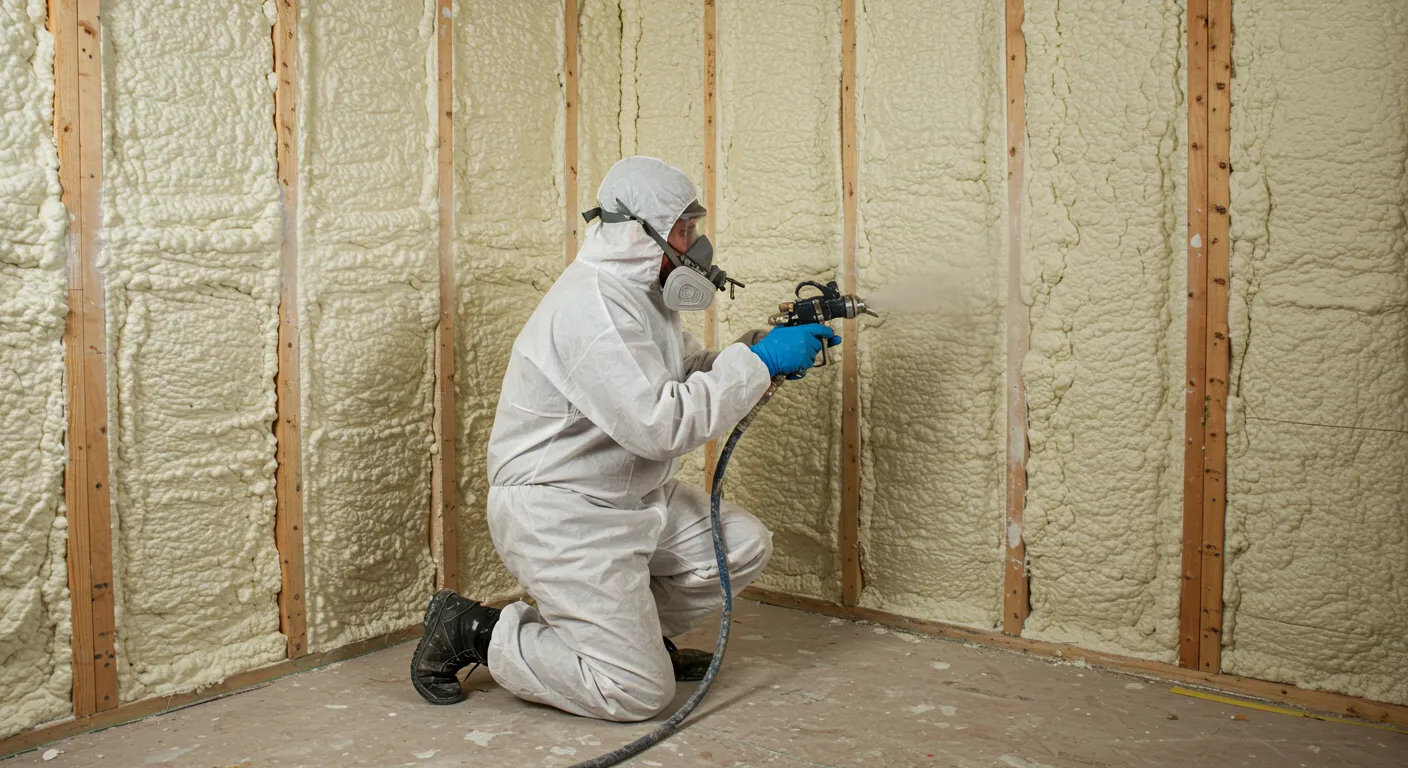
Spray foam insulation has become a popular choice for homeowners and businesses due to its superior energy efficiency, air-sealing properties, and long lifespan. However, while it offers many benefits, there are some potential downsides that property owners should consider before installation. This article explores the drawbacks of spray foam insulation, including cost, installation challenges, environmental concerns, and potential health risks, to help homeowners in Oklahoma City, OK, make informed decisions.
Spray foam insulation is a liquid-applied material that expands into a solid foam, creating an airtight barrier against heat loss and air infiltration. It comes in two main types:
While these properties make spray foam insulation highly effective, there are several factors to consider before opting for it.
One of the most significant drawbacks of spray foam insulation is its upfront cost. Compared to traditional insulation methods such as fiberglass or cellulose, spray foam is more expensive due to the specialized materials and labor required.
| Insulation Type | Average Cost per Square Foot |
| Fiberglass | $0.40 – $1.50 |
| Cellulose | $0.60 – $2.00 |
| Open-Cell Spray Foam | $0.44 – $0.65 |
| Closed-Cell Spray Foam | $1.00 – $1.50 |
Despite the high initial cost, spray foam insulation can lead to long-term energy savings, which may offset the expense over time.
Unlike traditional insulation that can be installed as a DIY project, spray foam requires a professional application. The installation process involves mixing chemicals on-site, which must be applied correctly to avoid issues such as:
During application, spray foam releases volatile organic compounds (VOCs) and other chemicals that may cause respiratory issues, eye irritation, and skin reactions. Common concerns include:
While spray foam insulation reduces energy consumption, its production involves chemicals that can negatively impact the environment. Some concerns include:
Improper application of spray foam insulation can lead to structural concerns, including:
Despite these drawbacks, spray foam insulation remains a highly effective solution for many homeowners, especially in areas with extreme weather conditions like Oklahoma City, OK. The decision ultimately depends on factors such as budget, long-term energy savings, and specific home requirements.
Spray foam insulation offers exceptional thermal performance, energy efficiency, and durability. However, it also comes with potential downsides, including high costs, health risks, and environmental concerns. Homeowners in Oklahoma City, OK, should carefully evaluate these factors before choosing spray foam insulation.
For expert advice and professional spray foam insulation services in Oklahoma City, OK, Contact Red River Spray Foam Insulation today. Our experienced team ensures safe and efficient insulation solutions tailored to your needs.
Spray foam insulation can last over 50 years with proper installation and maintenance.
Yes, once fully cured, spray foam is safe. However, homeowners should avoid exposure to chemical fumes during installation.
Yes, but removal is labor-intensive and costly, often requiring professional assistance.
If improperly installed or exposed to excessive moisture, spray foam can trap condensation, leading to mold growth.
While the cost of spray foam is high, it offers long-term energy savings, improved air quality, and superior insulation performance.
No, professional installation is required due to the chemical mixing process and potential safety risks.
Yes, open-cell spray foam provides soundproofing benefits by reducing airborne noise.
While it improves energy efficiency, some spray foam products contain chemicals with high global warming potential.
Properly installed spray foam insulation can increase home value due to its energy efficiency and durability.
Yes, but it requires drilling small holes for application, making it more invasive than new construction installations.